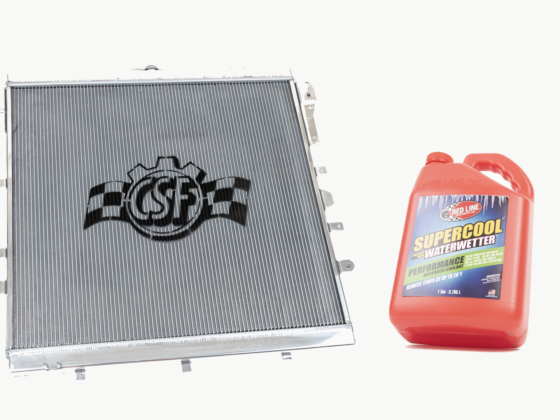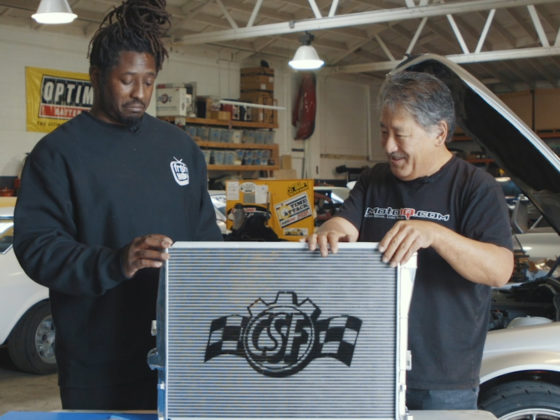 Finally, my long-awaited RAYS Wheels Volk TE37 wheels. While the original Volk TE37 wheel has been around for over 25 years, it was developed by RAYS Wheels when performance cars were smaller, lighter, and—in Japan—mostly limited to 280 horsepower, per the “gentlemen’s agreement” back in the day. With today’s horsepower and increased weight, however, RAYS Wheels sought to meet these market demands by reengineering the popular TE37 with what today is known as the TE37 SAGA.The TE37 is arguable one of the most popoular wheel designs of all time. But, to those not in the “know”, looking at the TE37 line up can be overwhelming. There were so many subtle changes and improvements through the years to the original TE37 (like the TE37 Super Lap, TE37 Ultra, TE37 Ultra Track Edition, etc), that it requires some research to figure which one would be best for you. The TE37 SAGA is one of the newer wheels that RAYS Wheels has reengineered for its Volk line up, and it reportedly came after a year of extensive developmental research.
Finally, my long-awaited RAYS Wheels Volk TE37 wheels. While the original Volk TE37 wheel has been around for over 25 years, it was developed by RAYS Wheels when performance cars were smaller, lighter, and—in Japan—mostly limited to 280 horsepower, per the “gentlemen’s agreement” back in the day. With today’s horsepower and increased weight, however, RAYS Wheels sought to meet these market demands by reengineering the popular TE37 with what today is known as the TE37 SAGA.The TE37 is arguable one of the most popoular wheel designs of all time. But, to those not in the “know”, looking at the TE37 line up can be overwhelming. There were so many subtle changes and improvements through the years to the original TE37 (like the TE37 Super Lap, TE37 Ultra, TE37 Ultra Track Edition, etc), that it requires some research to figure which one would be best for you. The TE37 SAGA is one of the newer wheels that RAYS Wheels has reengineered for its Volk line up, and it reportedly came after a year of extensive developmental research.


RAYS Wheels develops aggressive designs for its wheel parts that can’t be seen from the outside, including that of maximizing cross sections and the central parts of the wheel. It also has its own 10,000 ton forging machine, which is the largest in Japan. With this machine, if a wheel has a high forging ratio (which comes from dividing the cross-section of the completed forged wheel by that of the original billet–essentially represents a wheel’s ability to apply pressure), it can be molded in a single pressing.
While RAYS Wheels has a number of forging processes ,the RM8000 mold forging method is worth sharing. This process helps to streamline manufacturing and reduce production costs by enabling finish forging and rim spinning (two processes that are usually performed separately) to be performed simultaneously while the mold is being rotated. This unique forging method reportedly speeds up the production of RAYS Wheels’ forged wheels substantially.

RAYS Wheels’ JWL SPEC2 tests involve the following:
-Dynamic radial fatigue test: 1,000,000 revolutions (JWL: 500,000 revolutions)
-Rotary bending fatigue test: 200,000 revolutions (JWL: 100,000 revolutions)
-13-degree impact test: Dropped from height of 305 mm (JWL: 230 mm)
RAYS Wheels’ JWL+R strength test also involves:
-90-degree impact test: Dropped from height equal to 140 mm/ton
-Dynamic radial fatigue test after deformation of inner rim: 800,000 revolutions
-Wheel rigidity test (FEM strength analysis, rim stress)
-Coating film performance test (spraying of saline water, adhesion of coating film, weather resistance test, etc.)
On the back of the SAGA wheel, we can also notice the deep pockets behind each spoke—an indicator of the amount of material that was cut out. RAYS Wheels was able to do this because of the strength of the SAGA wheel. By doing this, RAYS Wheels has kept each 18×9.5 wheel to around 18.5 lb, which is only a 1lb off from where it used to be—a small price to pay for the significant added strength all around.

One of the key secrets to RAYS Wheels’ wheel strengths is in their fiber flow lines, which can’t be seen. With the design mold-form forging method used by RAYS, molds are used in all of the processes involved in the forming of fiber flow lines. This makes it possible to align the fiber flow lines precisely to create the ideal form (mold shape). Uninterrupted fiber flow lines produce greater strength, allowing the material to be more thinly shaped. RAYS reports this process makes it possible to push wheel weight reductions to the limit. This is why we’ve seen them so successful in the professional stages of racing, like the GT1 World Championships.




9 comments
You can’t go wrong with TE37-s on a GT-R. Like BBS E88-s on an aircooled Porsche, or BBS RS-s on an E30.
The brake ducts seem like a prime example of parts that need to be reverse engineered and remade from carbon fibre.
I saw some Rays wheels on a wrecked Nissan Z at the junkyard and the barrel was massively bent out of shape, but there were no cracks whatsoever. I am an engineer and I have never seen aluminum deform like that. It was seriously impressive. They must use some kind of proprietary alloy. I don’t know how you could do that with 6061.
New wheels/tires look awesome, and fit the car nicely!
Seems like it’s an easy opportunity to make reproductions of the brake ducts on a 3D printer a la Billy Johnson’s articles on Project NSX. Should cut down on the cost a fair bit, even if you have to get them 3D scanned to develop the initial model.
The last picture on page 1 made me chuckle pretty good.
Thanks for replies, guys. I agree, reverse engineering some of these parts would be awesome. Another impossible part is the most forward of the two under trays (that actually attaches to the lip). Of course someone could fab that out of some aluminum, too. I’m afraid I’ll find some other forbidden-fruit parts as the years go on.
Andy ;-).
Rear spats & hood lip would be even nicer😉
I DEFINETELY remember the 2nd video from back in the day, I remember just being like “HOLY SHEEYYT”
Isn’t it great? I was so happy to find them. I lived by those videos
My UPS guy has a stash of treats for “overzealous” pets. Would have been hilarious if he threw you a Snickers or something to keep you “calm”. That pic made the article lol.
lol that’s awesome. (I probably would have eaten it, too)